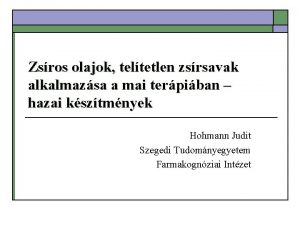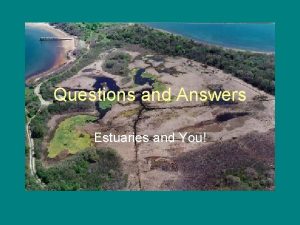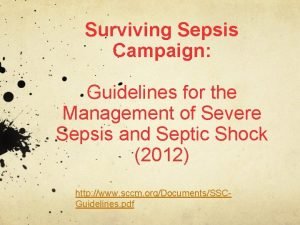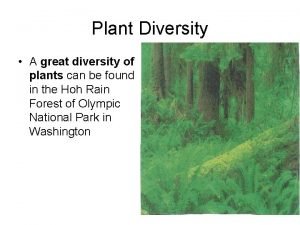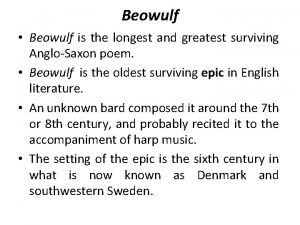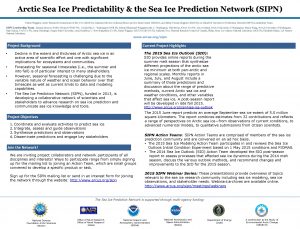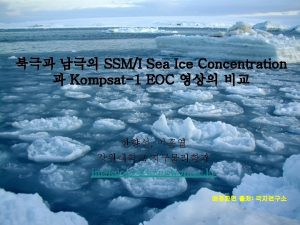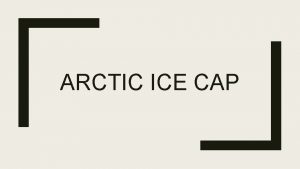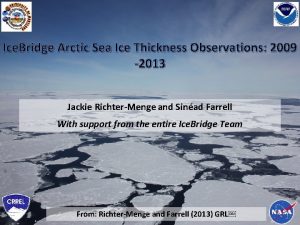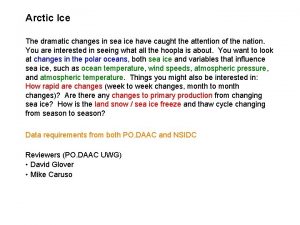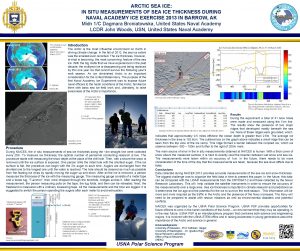Arctic Sea Ice Surviving the Summer Melt Jay








- Slides: 8

Arctic Sea Ice Surviving the Summer Melt Jay Zwally & Per Gloersen • • • During the summer melt, the local minimum sea ice concentrations vary in time and location on the ice canopy and differ from the overall September minimum. The aggregate sea ice area calculated from the local areas at the local temporal minima (LTMs) is a better predictor than the sea ice area at the overall September minima of the multiyear sea ice areas the following winter. The LTMs occur over a time span of 5 months in the central Arctic. There has been about a 9% per decade decline in the various sea ice minima over the past 24 years. If this rate of decline persists (and there is no guarantee that it will), there will be no more Arctic Basin sea ice in the summer, and no winter multiyear sea ice by the end of the century! For additional information on this project, please view the following related Power. Point presentation at the following URL: http: //neptune. gsfc. nasa. gov/csb/calendar/calfiles/Truncated_LTM_paper_200603. ppt Terms: Aggregate-the total amount or whole mass of (i. e. sea ice) LTM-Local Temporal Minima: the time at which a given pixel achieves its minimum concentration Pixel-the smallest element of a digitized image

Data from the Nimbus 7 SMMR and the DMSP/SSMI passive microwave imagers LTM ice concentrations from 1991 – 2002 Times of occurrence of the LTM ice concentrations from 1991 -2002 Acronyms: SMMR-Scanning Multichannel Microwave Radiometer DMSP/SSMI-Defense Meteorological Satellite Program / Special Sensor Microwave Imager

MYC=Multi-Year Concentration 9. 0%/decade 9. 6%/decade 9. 5%/decade

Successful AMSR-E Snow on Sea Ice Aircraft Validation Campaign Donald J. Cavalieri (614. 1) and Thorsten Markus (614. 6) Snow (depth) on sea ice is a critical component of the polar climate system. Snow on sea ice: üis an extremely efficient thermal insulator ücan significantly alter the ocean-to-atmosphere heat exchange üis a major uncertainty in the retrieval of sea ice thickness from ICESat. Snow depth has become a standard Aqua AMSR-E sea ice product, even though the capability to measure snow depth from space is relatively new. Nonetheless, its validation is extremely difficult as no other satellite sensor can measure this quantity. As a result: üan airborne field campaign using NASA’s P-3 B aircraft was conducted over the Alaskan Arctic Ocean in March 2006 that can directly measure the snow thickness on sea ice from reflections at the: • air-snow interface • snow-ice interface The data set collected is probably the most comprehensive and extensive set of ice thickness and snow depth measurements ever. Press Coverage: In addition to a NASA press release and several scientific websites, the campaign was widely covered by cnn, abc news, and msnbc and other news organizations. Acronyms: ICESat-Ice, Cloud, and land Elevation Satellite AMSR-E-Advanced Microwave Scanning Radiometer-EOS EOS-Earth Observing System

Successful AMSR-E Snow on Sea Ice Aircraft Validation Campaign Donald J. Cavalieri (614. 1) and Thorsten Markus (614. 6) Ground measurements of snow and ice properties near Barrow were overflown by NASA’s P-3 B in order to validate aircraft instrumentation before conducting large scale measurements over the Arctic Ocean (photo J. Maslanik). Flight paths covering the Barrow area and other regions of the Arctic having different snow depths are shown as is that portion of an ICESat track that was underflown on March 24, 2006.

NPP VIIRS SHOWS GREAT PROMISE FOR CLIMATE QUALITY OCEAN COLOR OBSERVATIONS NPP VIIRS Signal/Noise Ratios are Excellent for Ocean Color In summary: Sea. Wi. FS = 1 Figure 1: Comparison of VIIRS EDU and MODIS SNR, relative to Sea. Wi. FS, at common input radiance and spatial resolutions. It shows that VIIRS should be comparable or exceed MODIS in SNR for ocean color and that its SNR well exceeds Sea. Wi. FS. VIIRS SNR varies across the swath, and is shown at three different positions. At this stage in development, it appears that the VIIRS instrument will have the performance required to extend and improve the Sea. Wi. FS/MODIS climate observations for ocean color. The ocean color group at GSFC continues to closely monitor test results and algorithm performance for the instrument and ocean color operational environmental data records, and has the expertise required to conduct the reprocessing which will be needed to produce a retrospective climate record for the ocean, global carbon, and biogeochemistry programs. Wayne Esaias, NPP VIIRS Sensor Scientist, Code 614. 2, GSFC wayne. esaias@nasa. gov Acronyms: NPP-NPOESS Preparatory Project NPOESS-National Polar-orbiting Operational Environmental Satellite System VIIRS EDU-Visible/Infrared Imager/Radiometer Suite Engineering Development Unit MODIS SNR-Moderate Resolution Imaging Spectroradiometer Signal-to-Noise Ratio Sea. Wi. FS-Sea-viewing Wide Field-of-view Sensor

WA-COOL Project Objective: § To establish an ocean observing system along the coastal ocean regions of Virginia, Maryland Delaware so that it can be used to develop and test new sensors, platforms, and applications to support NOAA and NASA coastal ocean remote sensing activities and products. Key Elements: § § Developing, testing and deploying a fleet of solar-powered surface autonomous vehicles named OASIS Development of software for command control of multiple OASIS platforms to support real-time dynamic mapping capabilities. Development of several novel field instruments including: a multi-spectral in situ fluorometer to support HAB detection Development of a robotic arm for controlled pointing of optical instruments to support above-water radiance measurements. Both devices are being developed for incorporation into OASIS platforms. Proposed Actions: § § Propose to monitor the cross-shelf variability of ocean temperature, salinity and fluorescence by deploying several AUV/gliders in years 2 and 3 of this propose effort. Propose to continue carrying out seasonal field surveys to investigate the interactions between biology and physics in this ocean margin system. One aspect of this effort is to obtain the necessary field observations for developing a longer term observing system § In the first year we will create a full surface current product for the MACORA region Current Education/Outreach Status: § Finally, the project is presently reaching out to establish and foster new collaborations with additional regional partners and is working to develop strong educational and outreach efforts, including the near completion of the “Oceans Alive” oceanography education journal for grades 9 -12 and university students. Acronyms: WA-COOL-Wallops Coastal Ocean Observation Laboratory OASIS- Ocean-Atmosphere Sensor Integration System HAB-Harmful Algal Bloom AUV-Autonomous Underwater Vehicle MACORA- Mid-Atlantic Coastal Ocean Regional Alliance Tiffany and John Moisan NASA Wallops Flight Facility

BIOME: Optics in the Coastal Zone Dr. Tiffany A. Moisan (PI) Dr. J. Blanco (ODU), C. Makinen (EG&G), M. Linkswiler (EG&G) NOAA-NASA Collaboration
